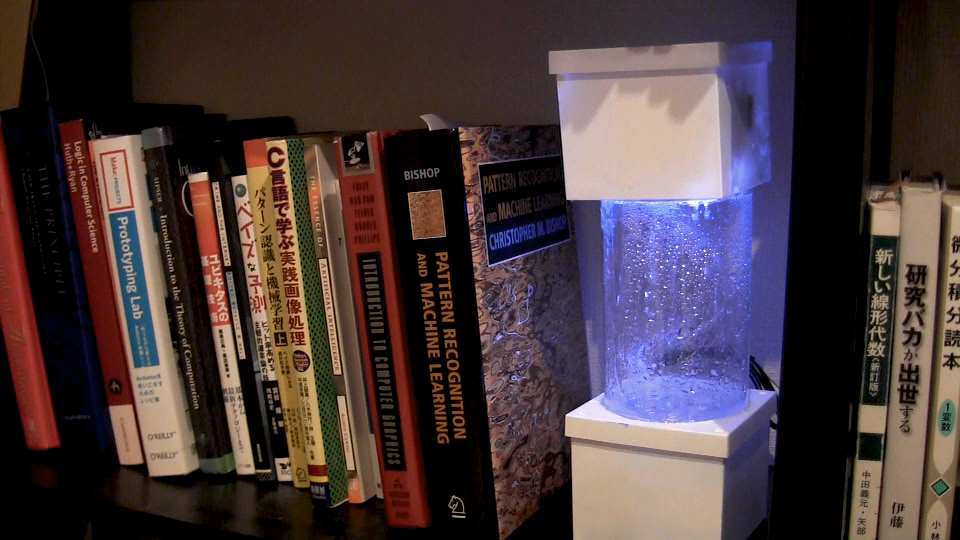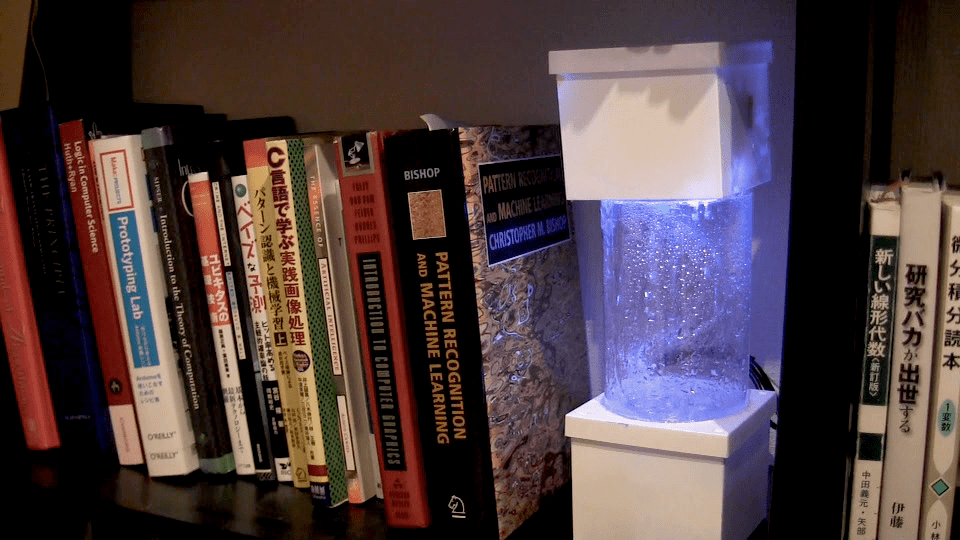
Forget Christmas, Summer is the most wonderful time of the year. Not only can you shed all those bulky coats and sweaters (and, you know, go outside without freezing to death), but summer brings trips to the lake and barbecues. However, nothing puts a damper on fun quite like bad weather can. Admit it, checking the forecast is one of the last things a person wants to do before soaking up ray from the Sun.
It’s possible that someday, you won’t have to check the weather forecast to know what mother nature has in store for you each day. A cool gizmo would remove the need (with added flair).

Designed by Ken Kawamoto (a Japanese software engineer with Google), the Tempescope device is a table-top ambient weather display that can simulate the weather indoors—it can’t simulate the Sun itself or anything (someone should get to work on that), but things like sunshine, clouds, rain and lightning are applicable. He notes that it also reproduces “various colors of the sky, giving visual cues for the time of day.”
In order to produce an accurate, up-to-date prediction of the weather, it checks your local forecast on an hourly basis, and adjusts its appearance accordingly; It can even tell you what the forecast predicts for tomorrow (not just for your location, but pretty much anywhere in the world). Additionally, it is so precise, it can tell you when the Sun rose the previous day, when clouds or lightning appeared, and when they dissipated (the same can be predicted for the future, but weather forecasting isn’t an exact science—there is no crystal ball). Either the events of the day can unfold in real time, or they can be sped up for effect.

Unfortunately, the Tempescope is not available for purchase currently—despite the fact that the constituent parts are surprisingly basic, running on a plastic container, a bluetooth/USB device, LED, pumps, an ultrasound diffuser, and an arduino board (in conjunction with a computer, of course)—but Kawamoto plans on launching a kickstarter campaign by the end of the year, which may ultimately lead to mass production. However, if you are thrifty and don’t want to wait, he has made the open source code available on Github (you can also find it here).
He explains which part does what, and how they work together to simulate the weather on his blog:
Weather conditions are reproduced by using 2 pumps, an ultrasound diffuser, and an LED:
- rain- the water pump pushes water from the lower chamber to the upper chamber, allowing water to fall through holes drilled at the bottom of the chamber.
- cloud- the ultrasound diffuser in the lower chamber turns on, creating mist. An external air pump pushes air (and mist) up from the lower chamber into the cylinder stage.
- lightning- the full-color LED is turned on at random intervals
- sunlight- the full-color LED changes colour from off to red to blueish white, depending on the time of day.
Electronics:
The electronics involved is not very much: an Arduino Uno controlling 3 SSRs and a full-color LED. There is also attached an SD card, which allows animation sequences to be saved and replayed without a PC.
[Reference: Zillionwater.com]
Kawamoto has also delved into potential extensions:
The device is controlled by an Arduino, which interfaces with a PC via USB or Bluetooth. There are currently two modes of operation, both of which run as PC programs: “Tomorrow’s weather”- which animates tomorrow’s weather forecast, and “World weather”- which reproduces the current weather of any location in the world.
While the former is what I originally intended to make, the latter may be what makes Tempescope interesting, and really worth working on in the future. One can view the device as containing a teleported slice of a remote world, a little Barbados in your room. It paves a way for all sorts of applications, some nostalgic (e.g have a slice of your hometown in your office), and some practical (e.g watching out for your loved ones halfway across the globe).
There are many extensions that I could make on the device, including snow, wind, real lightning, and showing land features.
Would you be interested in owning one of these? Let Kawamoto know.